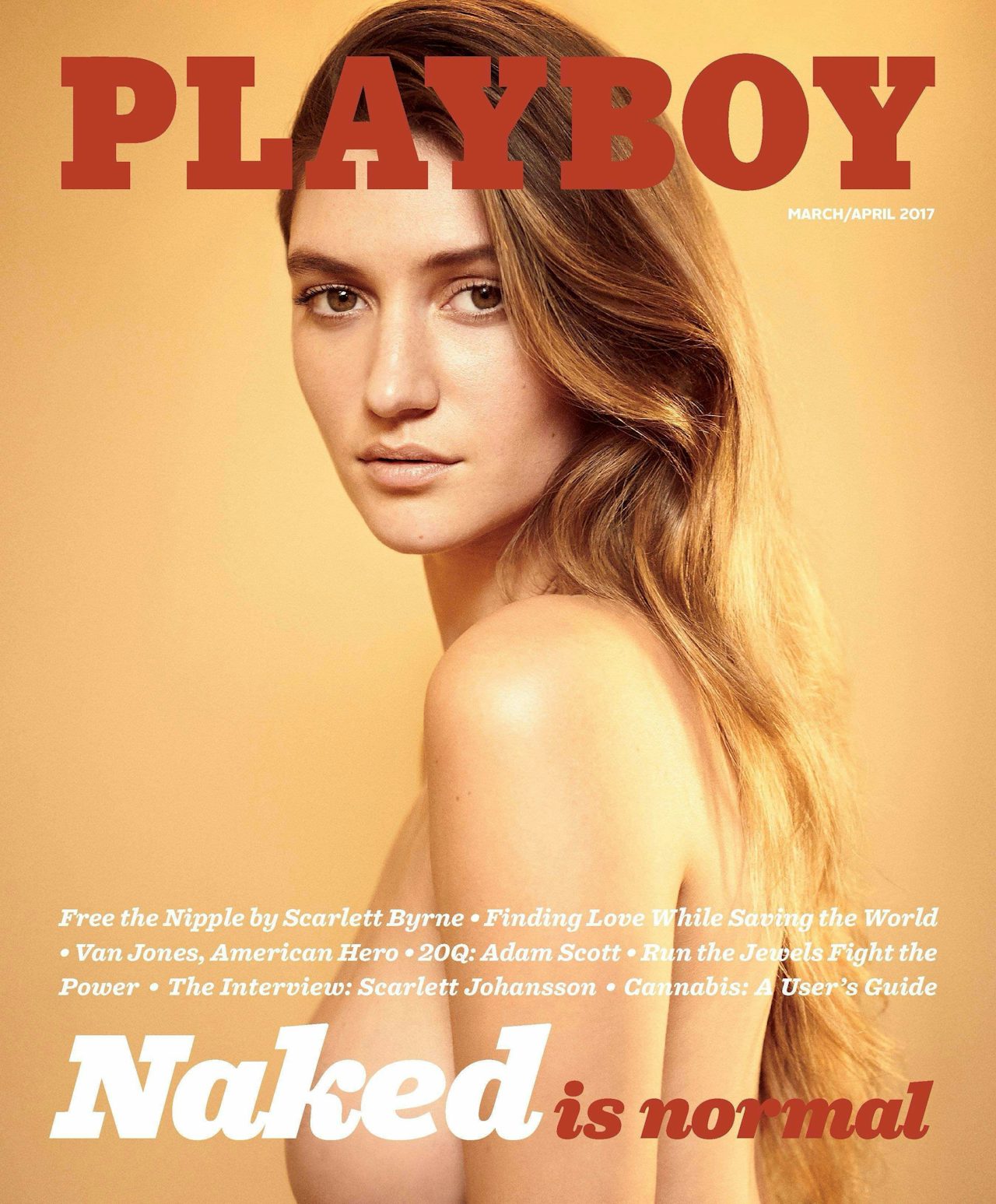Last October, Playboy announced that it was going to rid itself of its most prevalent, and seemingly valuable, feature: the nudes. The reasoning at the time, as founder Hugh Hefner wrote, was that our world “bears almost no resemblance” to the one in which the magazine was born in 1953. But Forbes, who hailed the change for… changing, suggested that the business no longer favored so much skin. Playboy founder Hugh Hefner’s son Cooper, who came to the business as chief creative officer last year, was publicly critical of the decision, saying, at the time, “What the hell is the company doing?” and referring to the nudity as part of the magazine’s “DNA.” Two weeks ago, amid reports that the magazine was shedding subscribers, the younger Hefner issued a statement on Twitter saying that Playboy was bringing nudity back after less than a year. “Nudity was never the problem because nudity isn’t a problem. Today we’re taking our identity back and reclaiming who we are,” he said.
The cover of the first “back to nudity” Playboy, for March / April 2017, featuring “Miss March” Elizabeth Elam, proclaims that “Naked is normal,” and most of the articles written about it swallow that bold statement whole. “In a nod to the end of its experimentation, Playboy’s new issue features a blaring headline on the cover, with a letter artfully placed over part of a topless model. ‘Naked is normal,’ it reads,” reported The New York Times. Naked is normal, if norms exist! What’s interesting about the new “normal” nudity of Playboy is that it doesn’t resemble the nakedness of Playboy of yore. Flipping through the issue, I see breasts and butts, but no vaginas; no pubes; no labia. One shot of a woman’s crotch in sheer black underwear bears the remarkable mouseprint of Photoshop: Where there should be lines or creases, there is simply blank space. The centerfold shot is of a woman holding a giant leaf over her crotch. It’s not a literal fig leaf, I don’t think, but the joke isn’t lost on me, if there’s a joke. Is there a joke? Is Playboy self-aware?
Unlike most men, I didn’t read Playboy for the articles: I was there for the breasts, the butts, and the vaginas. Playboy was always the “best” of the mainstream skin mags. If you found yourself, as I often did as a kid, rifling through your friends’ fathers’ nightstands, Playboy was what you wanted to find. Penthouse was a little horrifying, a little too medically accurate and graphic: Playboy or better yet, Playgirl (gasp) was the goods. Not too challenging, but an educational, titillating representation of what any girl could expect from womanhood. Where more hardcore magazines offered too much information for me, Playboy, which had drawn some probably arbitrary but fairly rational lines about what nudity it offered, blurred the hard edges off of things a little and offered a picture of the female form that seemed, well, recognizable. The gaze of Playboy was always male, but it was almost never terrifying.
The nudes-less Playboy seemed like a hard sell to me, though I am clearly not its target demographic. The return to nudity makes sense, and to some degree, from a business perspective, so does, I’m sure, the decision to forgo the “crotch shots” as AdWeek calls them. But from the perspective of a human and a woman, it’s a little disconcerting.
The timeline of Playboy then, is thus: First, full but “tasteful” nudity featuring breasts (with nipples); butts, and the pubic/labia area of women. Second, no nudity, mag-stand-safe era with no breasts, no butts, no nothing, but with photographs of women suggesting a possible nude situation is in their immediate future. Third, our current-era mag, which features what they call “full” nudity, but what I call Barbie nudity: There are vaginas, if vaginas looked like what any non-anatomically correct doll possesses.
My gripe with this new, “bold” era of Playboy is that one is constantly straining to see something so conspicuously absent. What constitutes “nude” in publishing terms is a matter of opinion, but to show women so clearly nude and yet not show their genital area — or worse, to blot it out — is at best comical and at worst borderline disturbing. One image of a woman with an artfully placed leaf or credenza blocking our view of her crotch is fine; once you flip through an entire magazine’s worth, you start to wonder not just who the magazine is for but who the magazine is showing us. Why are these women with no sex organs posing for photographs so clearly meant to make us think about sex?
No one painted the end of the nude Playboy era as a win for feminism, but the ushering in of this new one, in which women are censored so “tastefully” in such a seemingly pointless way, seems to be a total loss for it. What we are asked to forgo here is any anatomical reality — I can get that easier by browsing Agent Provocateur — and the absence calls attention to itself at every juncture. Naked is normal… but not really. The female body is beautiful… but only to a point. The adults that compose Playboy’s audience apparently still need their images censored with conspicuous blankets and greenery. This alien middle ground, in which the center of a woman’s sexuality goes obscured, ends up detracting from the beauty of it that can be depicted by softcore pornography. And that leads us to ask, “What’s the point?”

